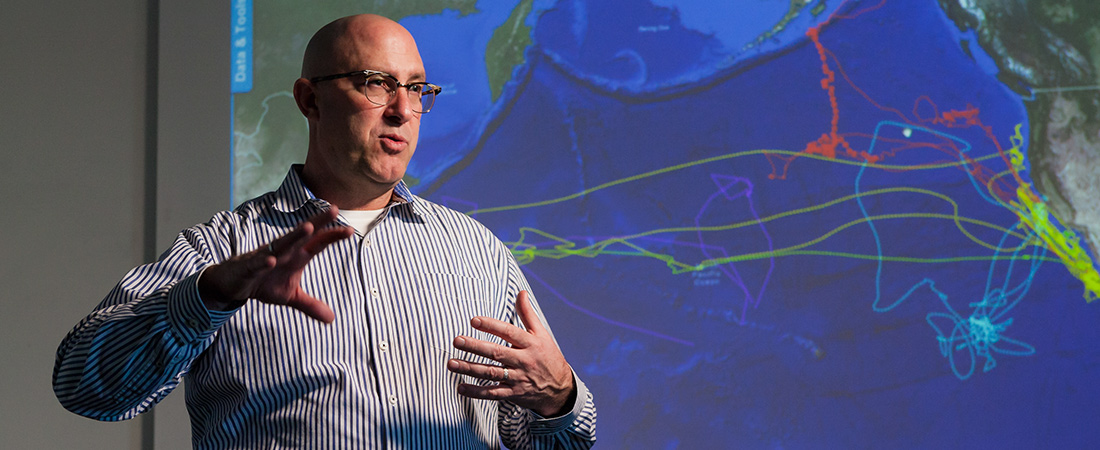A Data Scientist At Sea

Three months after graduating from college, Randy Kochevar boarded a research vessel bound for the East Pacific Rise, a shallow, volcanic ridge hundreds of miles off the western coast of Mexico. The Rise is home to unique species of sea life, including eight-foot-long tube worms that live in the area’s deep-sea hydrothermal vents. Since his days as an undergrad, Kochevar had been interested in these creatures—and now he was going to study them where they lived.
But a few days into the 45-day expedition, Kochevar was struggling. He was gathering reams of data about the creatures daily. What did it all add up to? He had no idea.
“I didn’t understand how to use those numbers to figure out, physiologically, what was happening to these animals,” he says.
Conducting analysis on a research vessel turned out to be radically different than anything Kochevar had ever done in a controlled lab setting. His struggle sparked the question that has driven him ever since: Why is it so difficult to extract meaning from data?
Thirty years later, the question is still relevant.
Knowing how to use data to solve problems is critical in today’s data-heavy world, says Kochevar. Data is collected on anything and everything—including scientific phenomena, financial services, and even traffic. Analysis tools are also becoming increasingly robust, allowing people without advanced degrees in data science to use data to pursue questions of interest.
It’s within this context that Kochevar’s EDC work takes place. Alongside a team from EDC’s Oceans of Data Institute, he created Ocean Tracks, a graphical interface that allows high school and undergraduate students to gather, interpret, and analyze biological data from marine animals. This interface and the student supports that accompany it are designed to bring to life the practices and questions of data-based scientific exploration.
“If you only learn something in the abstract, then you can’t really know it,” says Kochevar.
Kochevar believes that one reason students have so much difficulty with data is that they often think there is a single, “right” answer hiding in the numbers. But any data set contains hundreds, if not thousands, of answers, depending on the question that is being asked. Skillful scientists will find their specific questions of interest, and then use data to try to answer them.
“When you get out on the cutting edge of science, you don’t know what you are going to see,” Kochevar says. “You’re not looking for a right answer. You’re just thinking, ‘What is the story these data are telling me?’”